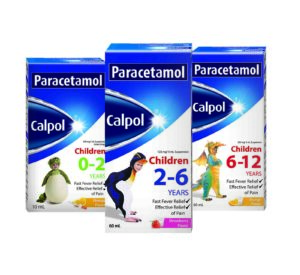Parents today have access to more health information than ever through the availability of online sources and e-consultation apps. But when your child comes down with a fever, you can’t help but panic and forget everything you know or have read. It may even be tempting to rush your child to the hospital for mild fevers.
In most cases, a fever is a healthy sign that your child’s immune system is at work. What’s important to know is how to manage it at its onset regardless of the cause.
According to Dr. Carmina A. Delos Reyes, Pediatrician and Infectious Disease Specialist, fever has various causes. “It can be due to infection, inflammation, allergies, or prolonged heat exposure. Its treatment depends on the underlying problem. While it is important to pursue diagnostic tests, fever management is still highly recommended to provide comfort to the sick child.”
To have a better grasp on how to manage your child’s fever effectively, here are five (5) easy steps:
Step 1: Recognize and identify fever and discomfort
There are many ways to know if your child is feeling feverish. While older kids verbalize their symptoms or discomfort, younger ones such as toddlers and babies express themselves through behavior. Be keen on changes in action and attitude such as loss of interest in toys or playing, loss of appetite, and increased crying.
The best way to confirm a child’s fever is by measuring their temperature using a thermometer. The normal temperature range for children is 36.5°C- 37.5°C. When the number rises above 37.5°C, the child has a fever1,3 and in need of treatment
Step 2: Give the right dose of paracetamol
Now that you’ve confirmed that your child has a fever, give him or her paracetamol as the first-line treatment. This action step is prescribed by the World Health Organization (WHO).
Be sure to purchase the right paracetamol formulation for your child’s age group. Dose your child correctly by taking your child’s weight, and following the recommended dosage instructions for your child’s weight band. The information is usually found on product labels.
Age can also be used as an alternative to guide dosing based on package instructions.
Step 3: Don’t forget to use the measuring device provided
Measuring medicine may sound like an easy task, but many parents are guilty of under-dosing their children. WHO recommends parents to use the measuring device provided with the products to avoid errors.
How about tablespoons and teaspoons? Although they seem harmless, using kitchenware can double the risk of dosing errors for children. It is best to stick to the dosing device provided.
If you’re confused by the markings and measurement abbreviations on the dosing devices, check with your doctor or pharmacist for guidance.
Step 4: Monitor your child’s progress and help them feel better
Want to do more for your child, but don’t know how? Here are some other ways you can do to help your child recover quickly.
DOs:
- Monitor the temperature and check regularly for rashes or fatigue
- Check on the child’s fever at night
- Ensure that the child drinks plenty of fluids
- Have the child stay at home until the fever has gone down
DON’Ts
- Do not give sponge or cool baths
- Do not under-dress or over-dress a feverish child
Step 5: If fever persists, give your child paracetamol again
If the fever does not subside immediately, give your child another dose of paracetamol (at 15 mg/kg) every 4-6 hours. Just be sure to not administer paracetamol more than four times in a 24-hour period. Be tough against fever and gentle to your child with Calpol for Kids. It is clinically proven to relieve 6 types of pain and fever and to start working on the fever in just 15 minutes.
Many parents may feel confused about how to handle their children’s fever alone. With these 5 easy steps, you can learn to build your confidence in fever management at home and aid your child’s speedy recovery.
If symptoms persist, consult your doctor.

About GSK Consumer Healthcare
GSK Consumer Healthcare is one of the world’s leading over-the-counter healthcare companies, developing and marketing a portfolio of globally recognized, consumer-preferred and expert-recommended brands across a number of categories. These category-leading brands include Sensodyne, Parodontax, Polident, Voltaren, Panadol, Otrivin and Theraflu.
GSK Consumer Healthcare is one of GSK’s three global businesses alongside Pharmaceuticals and Vaccines, with a common purpose to enable people to do more, feel better, live longer.



